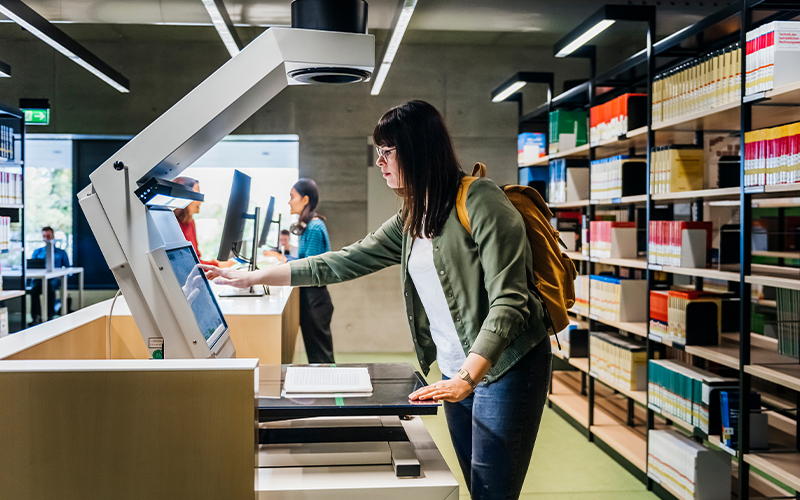“Learn, unlearn, and relearn” is the mantra of the twenty-first century. According to the LinkedIn Learning Report, 2023, job skills have changed by around 25% since 2015. By 2027, this figure may double. In this age of technological innovation, the delivery of learning has been transformed too. Earlier we always had the traditional in-person classroom. Technology brought in the online e-learning portal and live online interactions and the pandemic made the virtual classroom mainstream. Each system has its advantages and disadvantages. Is the blend of all the key to effective learning? Blended learning combines instructor-led education with a virtual e-learning environment, allowing for a more flexible, customised multi-channel experience. Multiple blended learning models have varying proportions of e-learning, instructor-led and in-person components. One size does not fit all, and optimising learning delivery is the key objective.
Blended learning implementations comprise an integrated platform with live instructor-led sessions, multimodal learning resources, assessments, self-paced learning, and interfaces to facilitate interaction. Digitalisation has brought in AI-enhanced adaptive learning and discoverability, bot tutors for 24/7 support, and a range of analytics and insights on learning patterns and knowledge gaps. It considers each learner unique and avoids average-based linear training, which treats everyone from beginners to experts the same. Instead, intelligent blended learning measures competence, identifies learning patterns, pinpoints gaps, and designs customised learning pathways using automated mapping and contextualization, making learning more intuitive.
Blended learning does sound like the panacea to the world's training woes, but how does it influence learning effectiveness? Effective learning requires subject matter expertise and compelling, evidence-based learning strategies. The platform should create a quality flow experience, a highly focused, continuous period of fulfilling learning engagement for the student. Learning engagement impacts the effectiveness of learning directly. Effective learning, in turn, should translate to the outcomes that the organisation wishes to achieve through the training – cognitive learning, application of learning, and business results. Let's look at some of the features of blended learning that help achieve learning effectiveness.
Personalised & Self-Paced Learning: The blended learning platform assesses the competence level of the individual before setting the learning path. The customised path leads to increased engagement for the learners as personalised content ensures that boredom, from going through content they already know, is avoided. The learning poses the right amount of challenge for them and increases focus by shortening the duration. The learning system captures the student's performance at a granular topic level and determines where additional support or practice is needed. The content is customised per users’ proficiency levels and provides extra help when needed and allows users to move on to more advanced topics when they are ready. Therefore, adept users learn at their own pace, and their interest stays strong.
Deep Learning Analytics: Blended learning platforms can analyse student performance, knowledge gaps, confidence, and improvement in real-time. This data is then used to deliver actionable insights and recommendations and report progress at every step. The data facilitates real-time personalisation of the learning pathway. And self-learning systems use data to optimise further and create better learning experiences. The feedback and recommendations provided to the learners make them more self-aware and, consequently, more engaged and invested in the process.
24/7 Bot Tutor: The convenience of anytime, anywhere learning makes virtual learning extremely popular. But since it is done in isolation, you can't raise your hand or tap the person next to you to get clarification if you are stuck. Looking up further resources to unravel the knots is laborious and may not be fruitful or even worsen the situation for complex topics, leaving the learner disheartened and disengaged. AI-enabled tutor bots provide 24/7 support, and they improve with each interaction. The bot tutor utilises insights from previous interactions to offer help in the mode that suits the student best, ensuring an optimal learning experience.
Blended learning, if not thoughtfully designed, might cause information and system feature overload. Information overload occurs in case of redundancy between instructor-led teaching and virtual modules and can lead to burnout. System feature overload is caused by features that are superfluous and rarely used. Features like electronic voting, live broadcast, and hot news might hinder learning if not used judiciously. It is necessary to collect frequent user feedback on the content's quality and the features' utility to avoid overload.
A blended learning assessment platform can prove a game-changer in an institute or organisation's pursuit of continuous learning. Thoughtful design, quality and multimodal content, constant user feedback, usage and learning data capture, and intelligent insights make blended learning platforms transformative tools in the journey to attain knowledge.
*For organizations on the digital transformation journey, agility is key in responding to a rapidly changing technology and business landscape. Now more than ever, it is crucial to deliver and exceed on organizational expectations with a robust digital mindset backed by innovation. Enabling businesses to sense, learn, respond, and evolve like a living organism, will be imperative for business excellence going forward. A comprehensive, yet modular suite of services is doing exactly that. Equipping organizations with intuitive decision-making automatically at scale, actionable insights based on real-time solutions, anytime/anywhere experience, and in-depth data visibility across functions leading to hyper-productivity, Live Enterprise is building connected organizations that are innovating collaboratively for the future.








